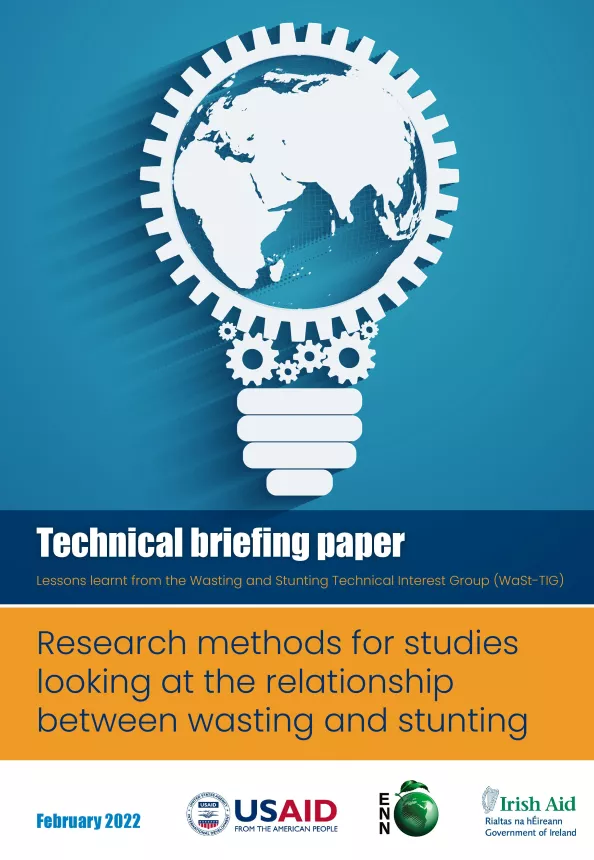Research methods for studies looking at the relationship between wasting and stunting
Publication details
The aim of this technical brief is to capitalise on and share the extensive experience of the Wasting and Stunting Technical Interest Group (WaSt-TIG) in scrutinising data through the lens of the relationship between wasting and stunting in the hope that it will inspire and facilitate others to do the same. Data used by the group include multiple datasets drawn from diverse settings and which have been collected with a variety of objectives, methodologies and study designs.
As a result of the work of the WaSt-TIG, there are a number of lessons that have been learnt that may help researchers and programmers involved in research, in their research methodologies. These are relevant not only for the design and planning of new studies, but also for the analysis of existing datasets that can be looked at through the lens of wasting and stunting.
In this technical brief, we start with an overview of the main characteristics of cross-sectional and longitudinal data, and how these different types of data have been used by the WaSt-TIG. In doing so, we set out some of the strengths and limitations of both, and discuss which research questions lend themselves to the different types of data.
In the second part of the technical brief, we summarise some of the learning and best practices arising from the collective experience of the WaSt-TIG, focusing on the choice of outcomes and exposures, consideration of seasonality, duration of studies, frequency of data collection, pooling datasets and data cleaning. We finish with reflections on systematic reviews, and then provide short overall concluding thoughts.
